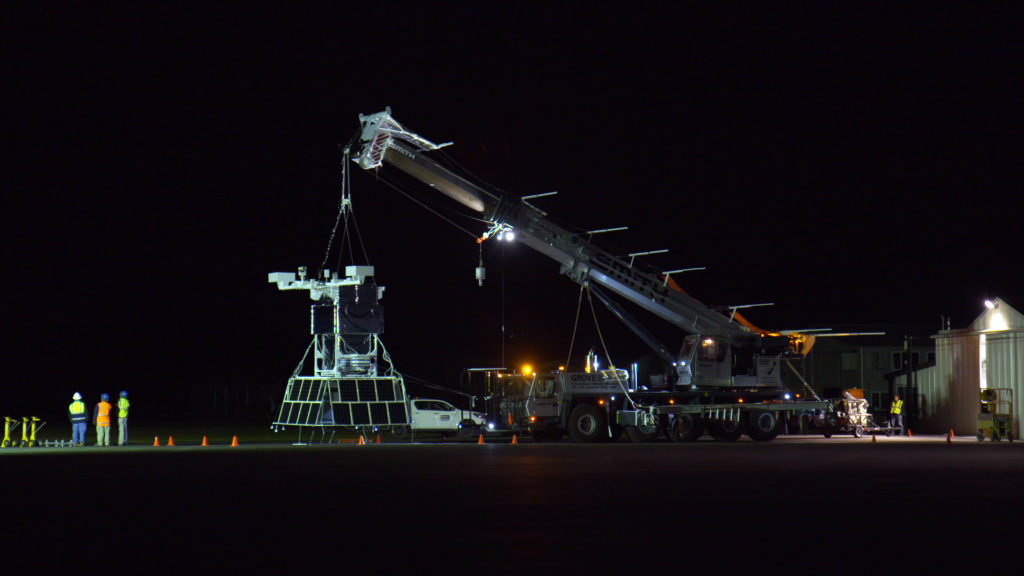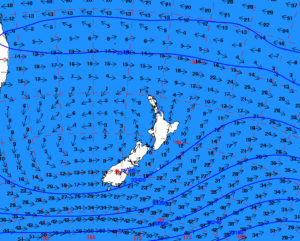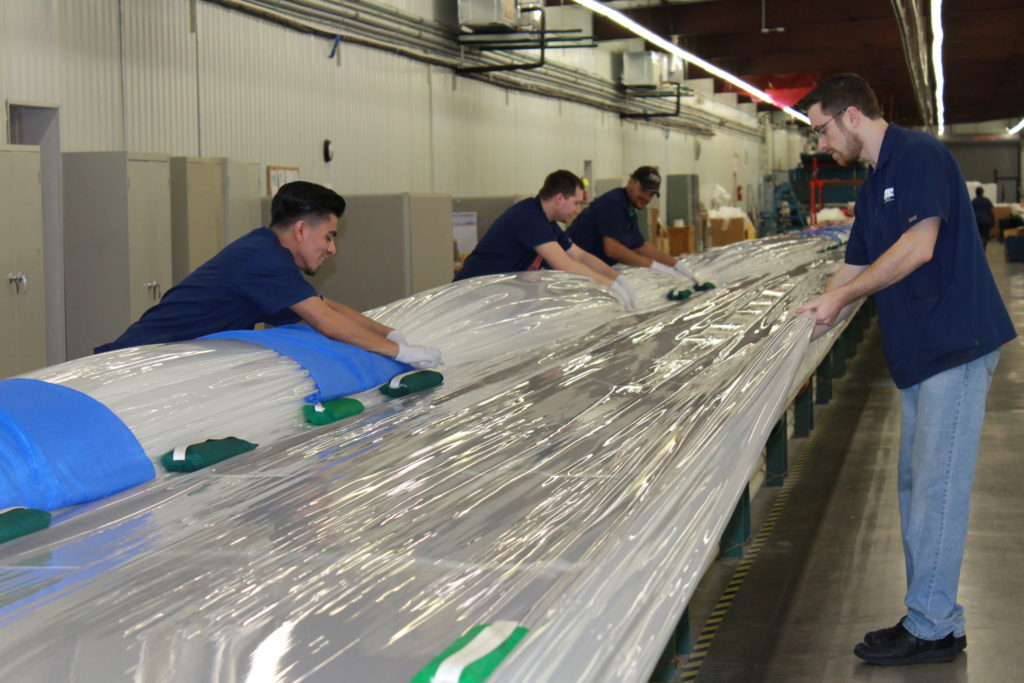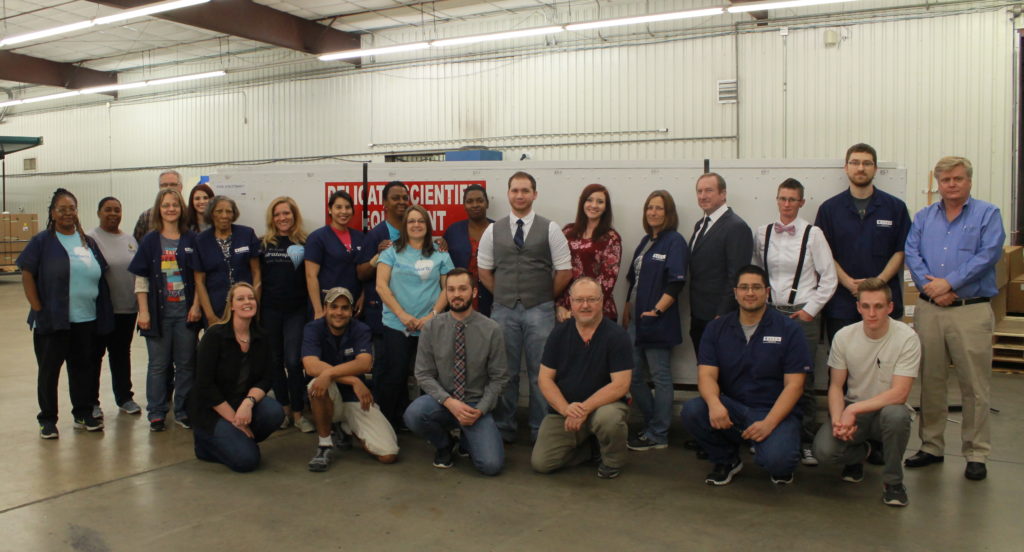Month: April 2017
Low Pressure System Thwarts Super Pressure Launch Efforts

Multiple areas of low pressure with associated precipitation and unfavorable winds have settled in over New Zealand preventing NASA from attempting a super pressure balloon launch from Wanaka over the next several days.
“Conditions do not look favorable for the next four to five days given the winds, forecast rain, and uncertainties with Tropical Cyclone Cook to the northwest of us,” said Chris Schwantes, NASA’s on-site meteorologist for the 2017 Wanaka Super Pressure Balloon Campaign. “However, forecast models currently show high pressure building up in the area after the Easter weekend, which could lead to favorable conditions for launching.”
Since declaring flight readiness March 25, NASA has conducted three launch attempts for its super pressure balloon.
The first of the three back-to-back attempts began April 8 (New Zealand time zone), ending early due to uncertainty with the balloon trajectory given forecast stratospheric wind conditions at 33.5 km (110,000 feet), the balloon’s planned float altitude. The second attempt, April 9, also ended early due to mechanical issues with NASA’s launch vehicle crane—issues that have since been resolved.
The third attempt progressed into the early morning hours of April 10 ending when surface and low-level winds failed to set up as required for launch.
“A lot of things need to go right to support a launch attempt, but only one thing needs to go wrong,” said Justin Marsh, campaign manager for the 2017 Wanaka Super Pressure Balloon Campaign. “Our team remains flight ready to support a launch attempt once the weather improves. All things considered, it’s still relatively early in the campaign.”
Third Launch Attempt Scheduled for Super Pressure Balloon
UPDATE: (4:30 a.m. New Zealand Time). NASA Balloon Launch Attempt Postponed Due to Weather
NASA postponed the third launch attempt of its super pressure balloon (SPB) from Wanaka, New Zealand, at 4:30 a.m. Monday, April 10 (New Zealand time) due to poor weather at ground and surface levels.
Wind speeds were just slightly above those required for launch, and with the uncertainty for precipitation in the area, the team made the decision to postpone for the day.
No launch attempt is scheduled for Tuesday, April 11. NASA will announce by 2 p.m. Tuesday, whether or not Wednesday’s weather will support a launch attempt. (All times/dates New Zealand time zone.)
————————————————————–
NASA is targeting Monday, April 10 (Sunday, April 9 in Eastern Time), to conduct a super pressure balloon (SPB) test flight launching from Wanaka Airport, New Zealand, on a potential 100-day journey.
NASA will begin flight preparations in the early morning hours Monday and will continue to evaluate real-time and forecast weather conditions throughout the morning. If weather is conducive for launch, lift-off is scheduled between 8 and 11:30 a.m. locally (between 4 and 7:30 p.m. EDT Sunday, April 9).
At this time, weather conditions are considered marginal for launch.
“There are periods of light rain forecast tomorrow, but we may have a launch opportunity early in our window,” said Gabe Garde, mission manager for the 2017 Wanaka Balloon Campaign. “In the stratosphere at 33.5 km (110,000 feet), the winds are forecast to take the balloon due east after launch, which is ideal for our operations.”
This is the third scheduled launch attempt for NASA’s 2017 Wanaka Balloon Campaign. The first attempt was canceled due to unacceptable stratospheric wind conditions; the second attempt was canceled due to a mechanical issue with a crane used for launch operations, which has since been resolved.
The launch can be tracked in the following ways:
• A live feed of the launch is available here: http://www.ustream.tv/channel/nasa-csbf-downrange-operations
• Track the progress of the flight at the following link, which includes a map showing the balloon’s real-time location, at: http://www.csbf.nasa.gov/newzealand/wanaka.htm
NASA Postpones Super Pressure Balloon Launch

NASA postponed the scheduled launch of its super pressure balloon (SPB) from Wanaka, New Zealand, at 2 a.m. Saturday, April 8 (New Zealand time) due to unacceptable stratospheric weather conditions for operations.
Along with monitoring ground and lower-level winds (up to 300 meters) on launch day, stratospheric wind conditions at 33.5 km (110,000 feet), which is where the balloon will float, also need to be set-up favorably to support a launch attempt.
While ground and lower-level winds were conducive for launch, winds in the stratosphere were not. A counter-clockwise flowing eddy has developed to the west of New Zealand’s North Island. Forecast models had the balloon launching from Wanaka and then traveling north bisecting the South Island before eventually getting caught up in the light and variable winds of the eddy. Ideally, an eastward trajectory after lift-off is preferred, though not necessarily required.
“Had the forecast stratospheric models pushed the balloon further west—not unlike what we saw in our 2016 launch—we would have seriously considered moving forward with our launch attempt,” said Gabe Garde, NASA’s mission manager for the balloon launch. “Unfortunately, there’s too much uncertainty in the final trajectory forecast given the nearby eddy pattern in the stratosphere. More opportunities will present themselves as we continue to move forward in the campaign.”
NASA will announce by 2 p.m. Saturday, April 8, whether or not Sunday’s weather will support a launch attempt.
Launch Attempt Scheduled for Super Pressure Balloon

NASA is targeting Saturday, April 8 (Friday, April 7 in Eastern Time), to conduct a super pressure balloon (SPB) test flight launching from Wanaka Airport, New Zealand, on a potential 100-day journey.
NASA will begin flight preparations in the early morning hours Saturday and will continue to evaluate real-time and forecast weather conditions throughout the morning. If weather is conducive for launch, lift-off is scheduled between 8 and 11:30 a.m. locally (between 4 and 7:30 p.m. EDT Friday, April 7).
“At this time, the weather at the ground and lower levels looks very good for a Saturday launch attempt,” said Gabe Garde, mission manager for the 2017 Wanaka Balloon Campaign. “However, we continue to evaluate the forecast stratospheric winds and predicted flight trajectory to ensure conditions are acceptable before launch.”
The launch can be tracked in the following ways:
• A live feed of the launch is available here: http://www.ustream.tv/channel/nasa-csbf-downrange-operations
• Track the progress of the flight at the following link, which includes a map showing the balloon’s real-time location, at: http://www.csbf.nasa.gov/newzealand/wanaka.htm
• For mission status updates follow NASA’s Wallops Flight Facility social media accounts: www.facebook.com/NASAWFF and www.twitter.com/NASA_Wallops
‘Seal Team 6’: Constructing a Super Pressure Balloon

As the latest super pressure balloon (SPB) prepares to lift off from New Zealand, carrying the Extreme Universe Space Observatory-SPB (EUSO-SPB) payload, one may reflect back on how this balloon, the 6th iteration in the current model of long duration balloons, came to be and what goes into its construction — acres and acres of plastic film, miles of load-bearing strength members, platforms for electronics, and suspension points for payloads, to name a few.
The raw materials and design are only part of it. A balloon of this size cannot simply ‘walk into Mordor,’ i.e. construction is a difficult task that involves hundreds of film segments. It requires a “seal team”—a primary team of six assemblers from Raven Aerostar, NASA’s balloon partner, to shape multiple segments of film into a vehicle that will function at a near constant 33 km altitude, well into the stratosphere, over long durations of day and night cycles.
Two Raven Aerostar assemblers are dedicated to operating the equipment necessary for heat-sealing each of the hundreds of segments together, integrally combing these segments with strength bearing components as they walk along, producing miles and miles of seals. A third assembler supports the first two, ensuring a first-class quality heat seal has been made.
Two more assemblers man the top and bottom of each balloon segment, dispensing materials and optimally positioning items prior to heat seal creation. The final member is responsible for sorting and arranging the massive heaps of balloon material that accumulates during the course of construction. Balloon creation is truly a team effort, with each of these six members performing numerous tasks, filling in the gaps in an intricate dance of sorts while each balloon segment is created.

Every great team has a supporting cast as well, and this is no different. Other Raven Aerostar members are responsible for fabricating and conditioning the balloon strength members, ensuring quality film goes into the balloon and providing direction on balloon design. All of this is done in conjunction with the broader NASA and Columbia Scientific Balloon Facility (CSBF) team, ensuring that what is constructed at Raven Aerostar has the best chance of meeting performance and operational requirements for each test flight.
“As a design engineer who also operates in the field for launch and recovery operations, I have personally had the opportunity to follow the last few super pressure balloons from design phase through fabrication, flight, and termination,” said Raven Aerostar’s Daniel Scheiber, who’s on-site in Wanaka, New Zealand, for the 2017 SPB launch. “It is remarkable what these balloons are capable of, and the scientific missions these giant balloons can support in the future has great potential. Our super pressure balloons provide access to near-space environments for fractions of what it would otherwise cost, and serve as platforms for scientific payloads to mature prior to making the trip to the International Space Station (ISS) and beyond.”
Contributed by Dan Scheiber, Raven Aerostar
